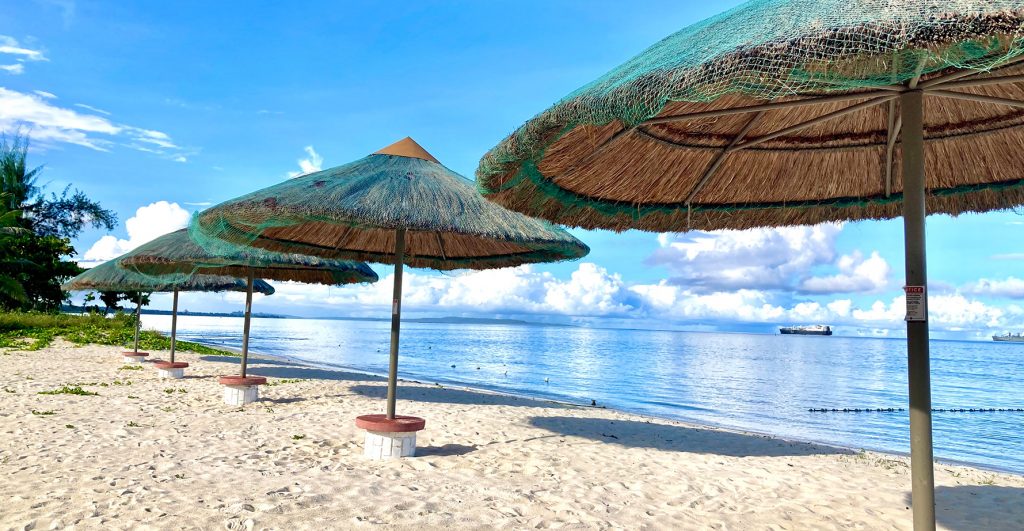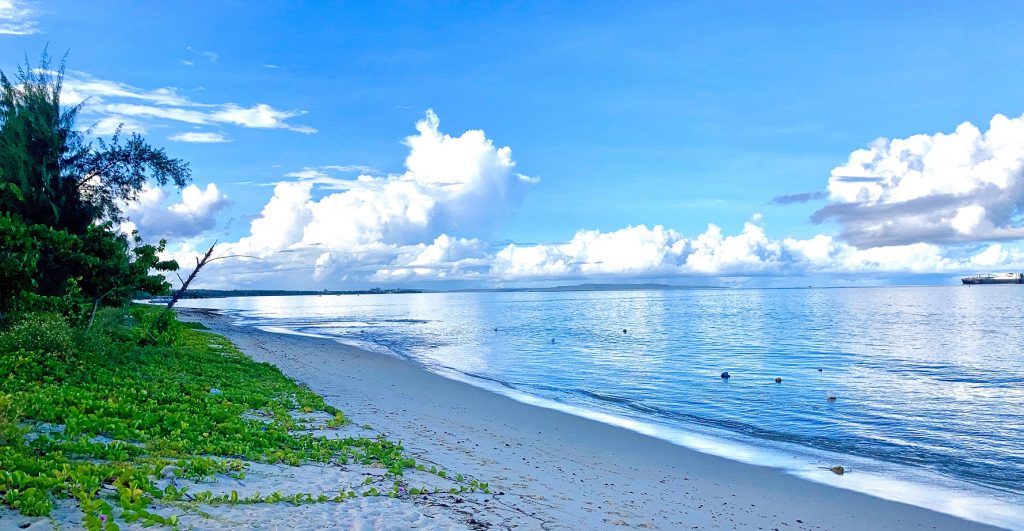Let’s talk crap: How fecal waste contaminates CNMI waters
Three weeks ago, Travis Spaeth spent his Thursday evening swimming at the beach in Garapan. Next thing he knew, he had a swollen foot, fighting an infection.
He had a small almost-healed cut on his ankle when he swam at the beach. A day after, it became sore, and then got completely engorged and painful a few days later, and his whole foot began to swell up.
Spaeth, who is an engineer and works as the Safe Drinking Water Program manager at the Bureau of Environmental and Coastal Quality, is not the only one. While not 100% certain that he got it from the waters, he said he knows of at least one other person who experienced the same, along with a pretty severe infection. And, there could be more.
“I ended up having to get on some medication to fight of the infection as my foot had swelled up so bad due to the infection,” he added.
Could it possibly be the waters? BECQ samples the beaches on Saipan’s west coast weekly for fecal bacteria contamination, and issues a red flag advisory when levels exceed the standards recommended for recreational activities, such as swimming or fishing. Water quality sampling in the area last week showed that fecal bacteria was 15 times higher than the safe level for recreation.
In a joint study the bureau did with the National Oceanic and Atmospheric Administration and the American University, published in September last year, fecal bacteria indicators were found to be widespread throughout the coastal waters of Saipan.

During heavy rains, the Department of Public Works closely coordinates with the Bureau of Environmental and Coastal Quality in monitoring the overflow from the drainage near Fiesta. (IVA MAURIN)
Higher levels are found along the shore of the central Saipan Lagoon, particularly around the Garapan fishing dock, as well as the drainage area of the Fiesta hotel.
The study also showed that most fecal bacteria found at Fiesta hotel’s beach is human in origin, with a significantly smaller amount of fecal bacteria coming from dogs. Contact with human fecal bacteria has the most potential to make people sick.
In an interview, TanHoldings vice president Alex Sablan stressed the corporation’s commitment to providing quality service to its patrons, and stated, “The water quality of our pristine beach is important to us and we would want to work with the government to do our part to ensure a positive experience for our guests.” Fiesta Resort & Spa is a subsidiary of TanHoldings Corp.
Fecal bacteria on the beach?
According to the Environmental Protection Agency, fecal indicator bacteria, such as enterococci, live in the intestinal tracts of warm-blooded animals, including humans, and its presence in waterbodies could mean possible contamination by fecal waste.
Its presence mean that there could be disease-causing bacteria and viruses in the waters, which can make swimmers, or anyone who contacts the beach, or eat raw fish or shellfish, to get sick, and possibly get diseases or infections of the skin, eyes, ears, and the respiratory tract.
Directly defecating while swimming is not the only way fecal bacteria could get to the waters.
They can also come from leaking septic systems, storm water runoff, sewage dumped from boats, animal and wildlife waste, improper sewage, wastewater treatment plant effluent, or runoffs from manure storage areas, and can also come from plants, sand, soil and sediments.
A separate study also attributed fecal contamination at the Fiesta drainage from sanitary sewer overflow, and runoff from roads and construction/maintenance during rain events.
Sewers overwhelmed with infiltration, especially during large rain events, can cause an overflow, which gets washed down to the ocean.
Government agencies, such as the Commonwealth Utilities Corp. and the Department of Public Works, have facilitated tests to check if building sewers are accidentally connected to the storm drains. During heavy rains, DPW closely coordinates with BECQ in monitoring the overflow from the drainage near Fiesta.
What can you do to help?
Aside from stating the obvious, and that is, to not defecate on the beach, and to not let animals do it either, BECQ offers the following easy tips that everyone can also do to help.
1. For the average homeowner, don’t put oil and grease down the drain. Doing so clogs the sewage system, and when the system gets clogged, the pumps can no longer work the sewage treatment system, and this could lead to an overflow.
When the rain comes, sewage overflow gets washed down the street, or mixes with the rainwater, draining the sewage down to the ocean, especially over at Fiesta because there’s a storm water outfall.
2. If you’re on a septic system, see if there is a sewer line within a certain distance to your house, and hook up to the sewer system. This way, your wastes would go to the wastewater treatment plant instead of into your yard.
3. For small livestock farmers, there are grant programs through USDA’s Natural Resources Conservation Science, that could provide for farm septic systems, wastewater holding tanks with regular pump out, or dry little piggeries for composting waste.
4. If you see a potential overflow or any water pollution, report it to BECQ so the issue can be addressed head on. You may contact their office at 664-8500.
5. To help disseminate information and resolve this fecal bacteria issue on CNMI waters, please help educate others and pass this information to those who might need it too.
Now well after his infection, Spaeth is calling on the government to continue to reduce or eliminate all sewer overflows, and for all storm drains to be tested to ensure no sewer lines are accidentally connected to them.
As for the public, he advises everyone to be careful when swimming in the ocean, especially near drainage channels and after heavy rain.
“Always be mindful of minor cuts or abrasions that allow bacteria to enter the body and cause infections… and be mindful of not littering, clean up all areas that may or may not lead to contaminating water ways, where people can be exposed through storm water runoff.”




























